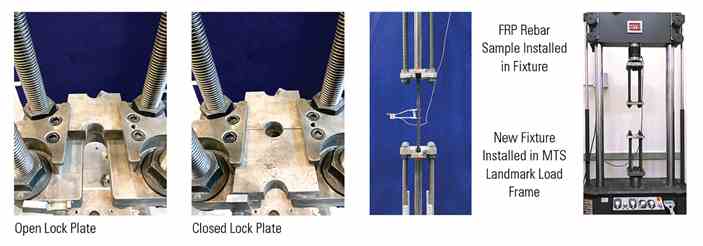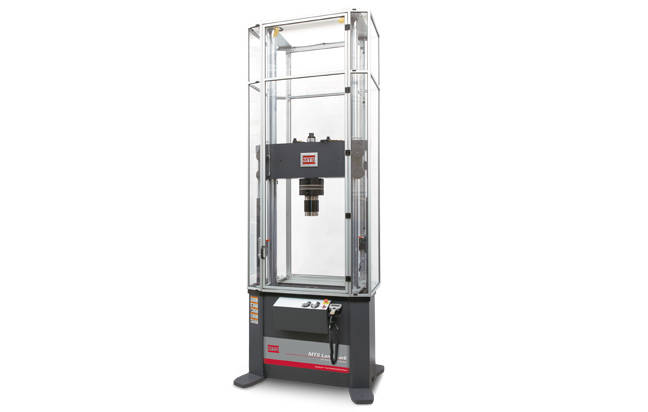
CUSTOMER CHALLENGE
Reinforcement bar, or rebar, is an essential component of large concrete structures, such as bridge abutments, road lane barriers, overpasses and building columns. For years, steel, which is vulnerable to corrosion, has been the material of choice for rebar because of its strength. Over the past two decades, technological advancements have made composite rebar a viable alternative to traditional steel reinforcement. Salt air, salt water, road salt, and aggressive soils all contribute to degradation of steel rebar, threatening the structural integrity of roads, bridges and buildings in coastal areas and northern climates. New rebar made with glass fiber reinforced polymer (GFRP), basalt fiber reinforced polymer (BFRP) or carbon fiber reinforced polymer composites provides distinct advantages in strength, magnetic transparency, lightness and most significantly, corrosion resistance.
Despite these advantages, fiber reinforced polymer (FRP) rebar has not been widely adopted yet because of the difficulties in confirming its strength, durability and reliability. International building codes now permit FRP rebar use, but a current challenge is that these materials are not standardized.
Dr. Raphael Kampmann, Associate Professor in the Department of Civil & Environmental Engineering at Florida State University, explains this challenge; “Engineers want to compare composite rebars to the structural steel that usually goes inside of concrete, and that steel is standardized. No matter if you buy it in China, Germany or the US, it doesn’t matter, you always get a standardized product.” He adds, “To implement FRP rebar technology in civil engineering structures and throughout the building industry, lots of material testing needs to be done to properly take advantage of these emerging materials. And again, all the materials are different, so each material needs a special approval.”
TESTING CHALLENGES
Accurately assessing real-world performance of composite rebars so they can be used confidently in infrastructure is a complex process, with several challenges:
Lack of standardization
Because standards prescribe performance criteria but do not specify material composition, each rebar may vary dependent upon the manufacturing source, type of material and material source. Validation therefore applies to a specific segment of finished products.
Number of sizes & parameters
Rebar comes in several standard sizes with nominal diameters ranging from 6 mm (0.25 in) to 57 mm (2.26 in). Unlike steel, the tensile strength of an FRP rebar varies with its diameter, therefore each size needs to be tested before a manufacturer can bring them to market.
U S T O M E R C A S E S T U D Y
In addition to testing initial tensile strength, the Florida State University team tests the rebars after they complete an aging process that replicates the aggressive environments found in the real world to see how much residual strength is left after exposure to environmental conditions. They then compare the benchmark values of the new rebar to the aged rebar to determine degradation. They also conduct several non-structural tests to study fundamental behavior of FRPs.
Time required for the aging process
Kampmann and his research team age the rebar at various intervals, which means they need to complete testing within a limited timeframe before moving on to the next set of rebars. He emphasizes that this “requires a reliable setup that reduces tooling time and guarantees a quick turnover to conduct multiple tests within certain time limits.”
Total number of tests
The sheer volume of testing required to validate performance is astounding. Kampmann elaborates, “For this one research project, we’re doing more than 700 tensile tests alone to test all the parameters and evaluate various rebar sizes and types.”
Gripping issues
One of the biggest challenges when testing FRP rebar is gripping the specimen. The specimen cannot be gripped at the ends as it could be for steel rebar because the results will be skewed due to the fibrous content of the specimen. Traditional gripping at FRP ends would introduce transverse force that would cause the composite materials to deform and crush before adequate tensile strength could be applied to the rebar.
ASTM D7205 describes a method to remedy the gripping issue in which the FRP rebar is anchored on both ends with steel pipes that are filled with an expansive grout or resin to transfer the loads from the testing machine into the rebar through friction. And although that sounds like a straightforward solution, there are two main challenges with it. First, you need to be able to accommodate the anchors within the test space, and the anchor size needs to be substantial enough to grip the specimen and provide enough friction. Oftentimes, the resulting required anchor size does not leave enough test space travel room to properly evaluate the specimen. Second, the anchors significantly increase the diameter of the specimen at the gripping point and standard gripping jaws often do not provide the needed capacity.
TESTING SOLUTIONS
The Florida State team has developed a new fixture that solves the gripping challenges and can accommodate any size rebar. This new fixture introduces force into the anchor, transfers it into the FRP specimen, and includes specimen lock plates to help ensure proper alignment.

The specimen lock feature improves testing speed and accuracy. Kampmann says, “If we’re testing 700 specimens, we have to be fast. Usually when you clamp the rebar, as you do with regular steel rebar, you always need to align it. But this is a one stop solution where you just slot it in, and you are done. Then you repeat test after test and you never have to set it up again.” He continues, “And it’s not just as a time saver. It also makes the test more reliable. With this fixture, no matter who operates the test procedure, it usually comes out to be the same, no matter what you do, because once it’s installed, it’s just not possible for the rebar to go anywhere else.”
An MTS Landmark® Test System easily accommodates the fixture, offering the required stiffness and adjustable test space needed to evaluate various rebar sizes. The new fixture simplifies specimen installation, eliminates the need for individual specimen alignment and provides accurate measurement results. This streamlined process provides enough time to complete all the necessary tests.
CUSTOMER BENEFITS
Florida State uses an MTS Landmark Test System, MTS TestSuite™ application software and MTS extensometers in their FRP rebar testing program; and Dr. Kampmann describes the experience of working with MTS: “Any question we have is immediately addressed—a lot of engineers jump into action when we ask for something. Customer service is definitely a priority at MTS and they don’t give up until we find a solution.”
As for the future of FRP rebars, Kampmann states, “The next ten years will be a flourishing time for testing all these FRP materials, because right now we are at a tipping point for the industry, where for the first time, building codes allow for the use of FRP rebar materials but not all the materials have been standardized or properly tested and validated.” He and his team have tested glass, basalt and carbon FRP rebar, and are ready for what the future may bring: “The nice thing about this fixture is it is independent of the tested material. We can use this fixture to expand our projects to other materials that have to be introduced to the market and will be tested. Bottom line is whenever these materials are used, for whatever reason, they have to be tested.”

